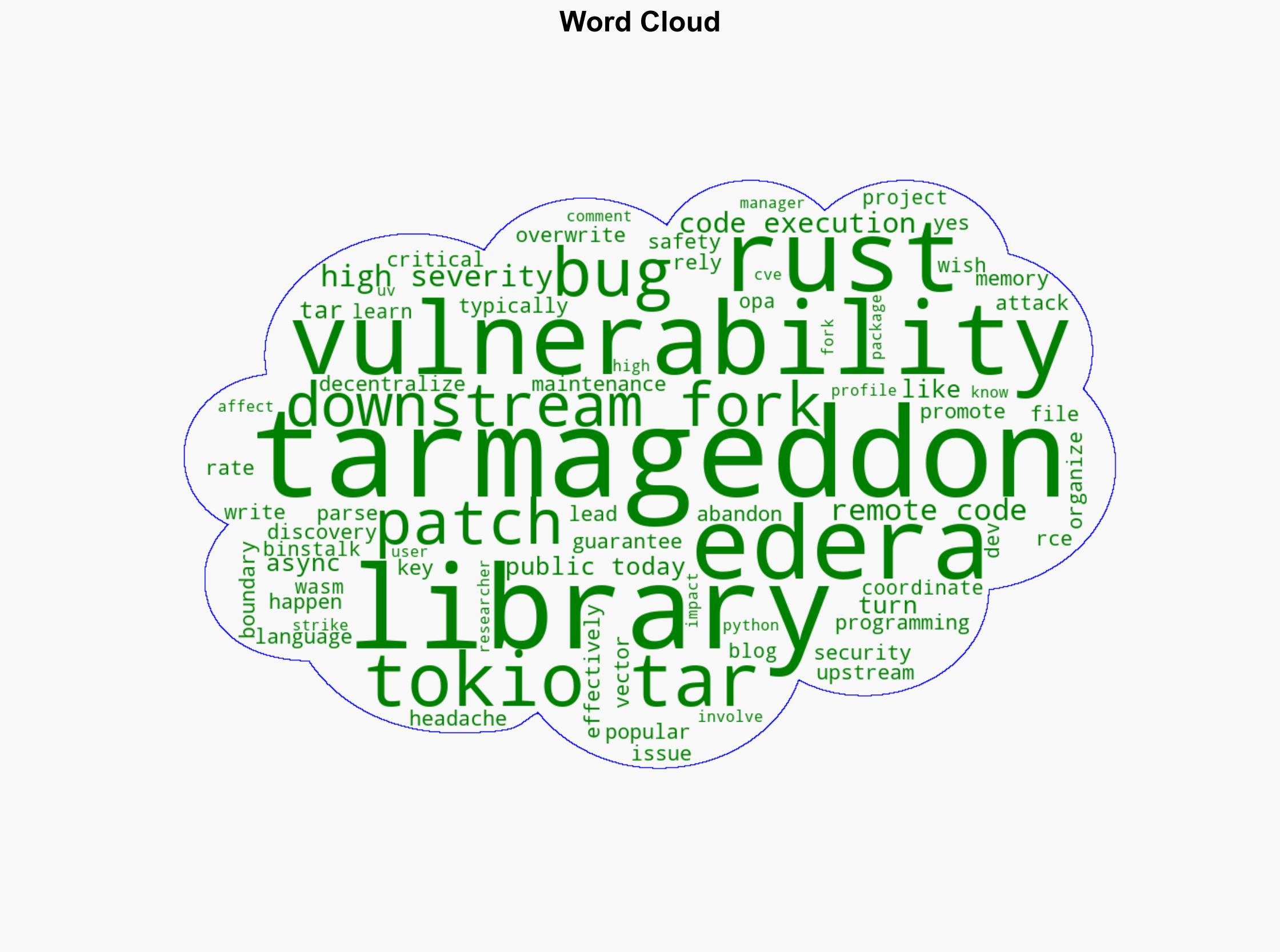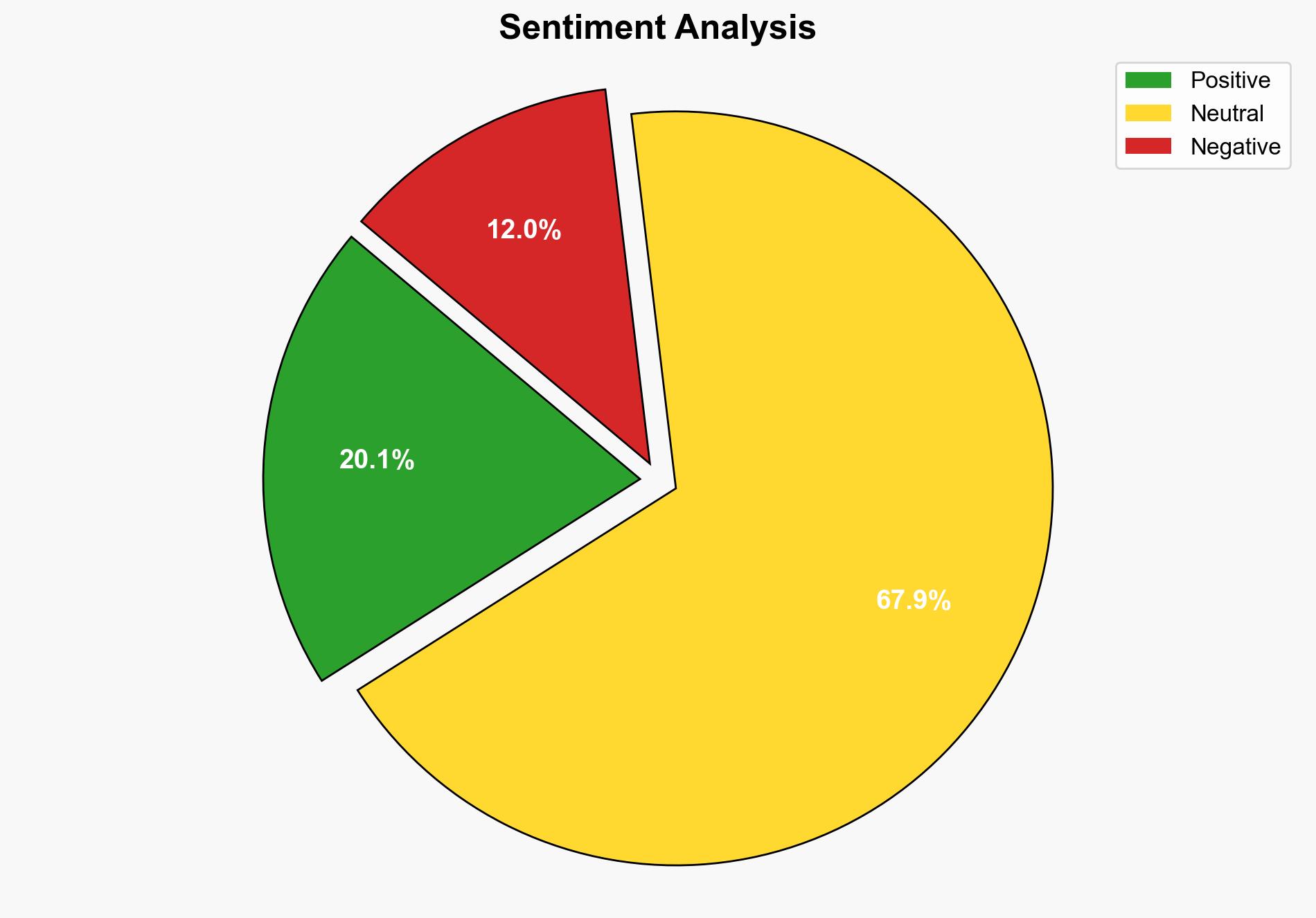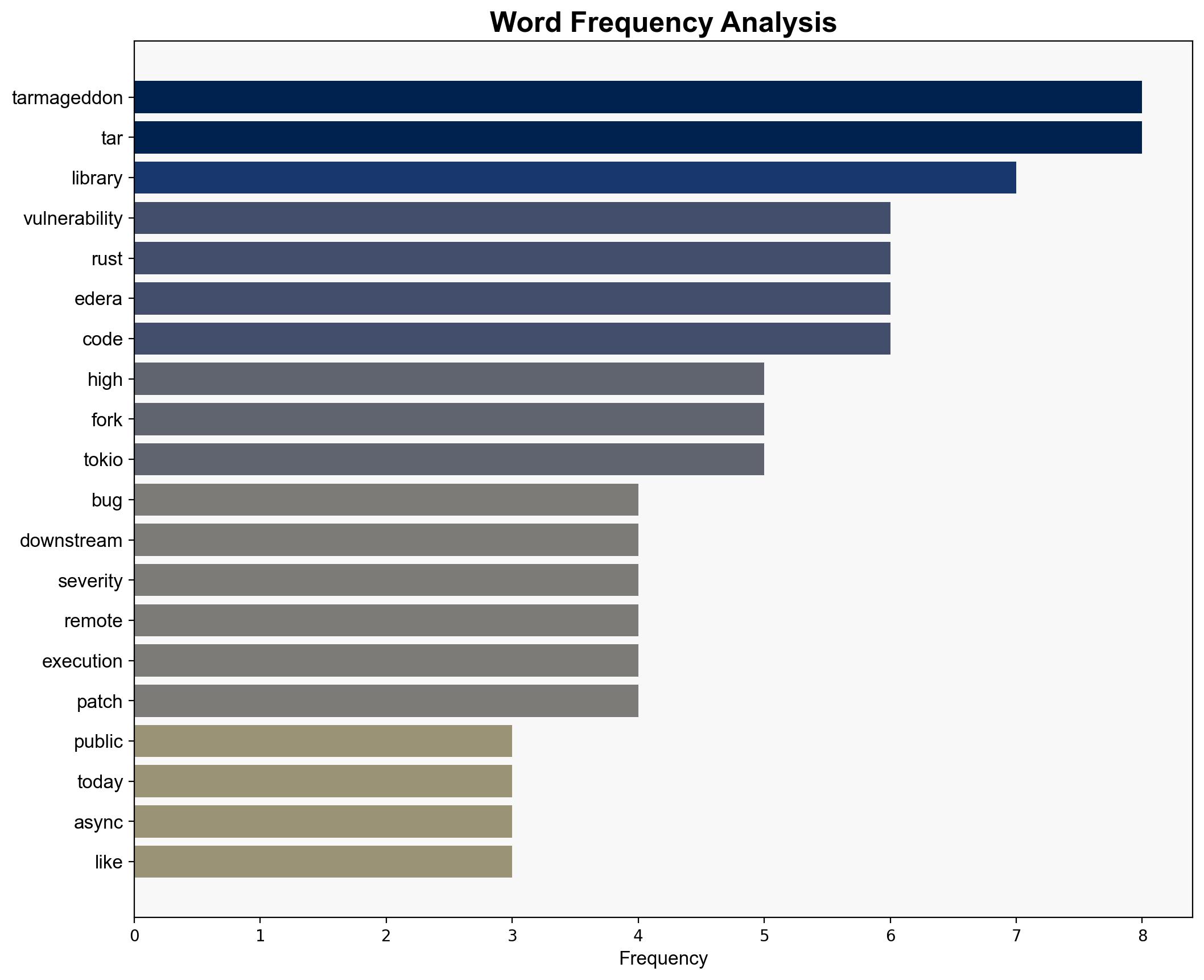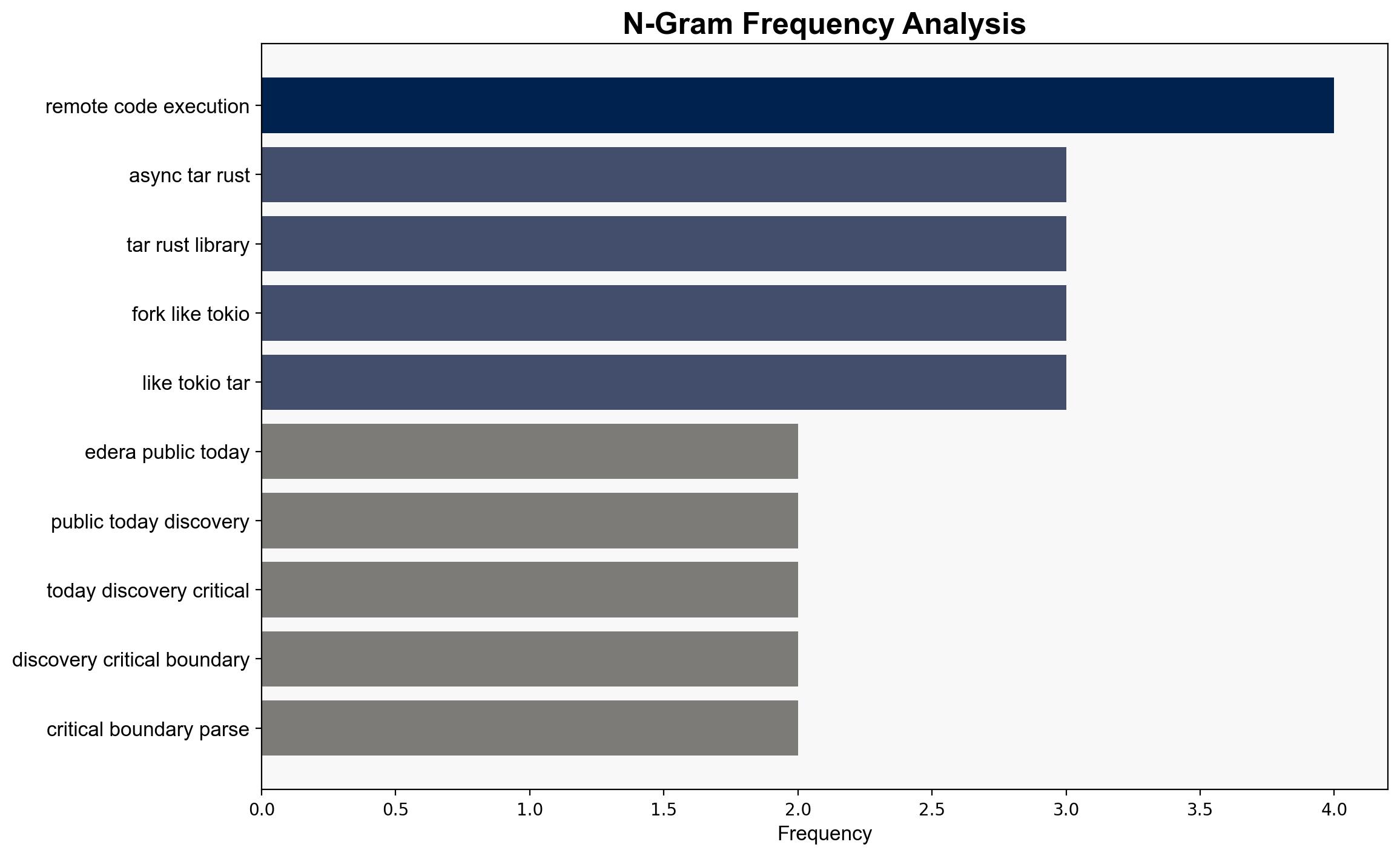TARmageddon Strikes High Profile Security Vulnerability In Popular Rust Library – Phoronix
Published on: 2025-10-21
Intelligence Report: TARmageddon Strikes High Profile Security Vulnerability In Popular Rust Library – Phoronix
1. BLUF (Bottom Line Up Front)
The TARmageddon vulnerability in the async tar Rust library presents a significant cybersecurity threat due to its potential for remote code execution (RCE) and file overwrite attacks. The most supported hypothesis is that this vulnerability results from a lack of upstream maintenance and coordination among developers, leading to critical security gaps. Confidence level: High. Recommended action: Immediate coordination among stakeholders to patch vulnerabilities and establish a sustainable maintenance framework.
2. Competing Hypotheses
Hypothesis 1: The vulnerability is primarily due to the abandonment of upstream maintenance and insufficient coordination among developers, leading to security gaps in the async tar library and its forks.
Hypothesis 2: The vulnerability is a result of inherent limitations in the Rust programming language’s memory safety guarantees, which were exploited despite the language’s reputation for security.
Using ACH 2.0, Hypothesis 1 is better supported due to the explicit mention of abandonment and decentralized patching efforts, indicating a systemic issue in maintenance rather than a fundamental flaw in the language itself.
3. Key Assumptions and Red Flags
Assumptions:
– The async tar library’s abandonment directly correlates with the emergence of the vulnerability.
– Rust’s memory safety guarantees are generally reliable, and this incident is an exception.
Red Flags:
– Lack of detailed technical analysis on the exact nature of the vulnerability.
– Absence of information on whether similar vulnerabilities exist in other Rust libraries.
– Potential bias in assuming that decentralized patching efforts are sufficient without centralized oversight.
4. Implications and Strategic Risks
The vulnerability could lead to widespread exploitation if not addressed promptly, affecting numerous applications relying on the async tar library. This poses risks to data integrity and system security across various sectors. Economically, the cost of patching and potential data breaches could be significant. Cyber risks include potential escalation if attackers exploit the vulnerability for broader attacks. Geopolitically, this could undermine trust in open-source software and Rust’s reputation.
5. Recommendations and Outlook
- Immediate action to coordinate a centralized patching effort involving all stakeholders.
- Conduct a comprehensive audit of other Rust libraries for similar vulnerabilities.
- Establish a long-term maintenance and oversight framework for critical libraries.
- Scenario-based projections:
- Best: Successful patching and improved coordination prevent further exploitation.
- Worst: Exploitation leads to significant data breaches and loss of confidence in Rust.
- Most Likely: Vulnerability is patched, but highlights need for better maintenance practices.
6. Key Individuals and Entities
– Edera: Involved in organizing decentralized patching efforts.
– Binstalk, OPA, WASM projects: Key entities coordinating patch efforts.
7. Thematic Tags
national security threats, cybersecurity, software vulnerabilities, open-source software, Rust programming language




